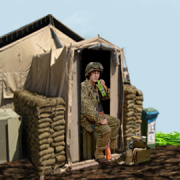-
Posts
5227 -
Joined
-
Last visited
-
Days Won
71 -
Donations
465.00 USD -
Points
123,600 [ Donate ]
Reputation Activity
-

-

-
 KaptCrunch got a reaction from PickleRick in Vote For Your Favorite Budman Beer Hero
KaptCrunch got a reaction from PickleRick in Vote For Your Favorite Budman Beer Hero
thought be this one
for TTB
Had one in the 80's in my car rear window for the traffic slow pokes, then pass them then moon them. anolog era before LED's
-
 KaptCrunch got a reaction from Key53 in how greed works with gov programs in canada
KaptCrunch got a reaction from Key53 in how greed works with gov programs in canada
the greedy prople do for money, the upselling BS @ McDonalds had ordered big mac meal and DEI (Diversity, Equity, and Inclusion) initiatives.
wanted to up sell me for a bonus after repeating just a mac meal 3 times i drove pay window and made sure i got just the mac meal then when get to pick window was told park on side and wait for my order ? Hmm rush hour an i have wait, while i found out @ 2am why i had to wait, awoke with bad diarrhea and sat on throne till 4:30 am. after looked at McD to report and got no place so i call the health board of the city store was in and was told i cannot place a report for i not live in the city. gee whats wrong with the world of respect & Covid. you see the false wittness written all over this greed. bye fast food you shot yourself in the foot. as you see the deals are all over the place now, the people has spoken with the wallets. same meal to day was only $11.89 with ice cream at time of food poisning was like $18 no ice cream.
-

-
 KaptCrunch got a reaction from major-mark63 in how greed works with gov programs in canada
KaptCrunch got a reaction from major-mark63 in how greed works with gov programs in canada
the greedy prople do for money, the upselling BS @ McDonalds had ordered big mac meal and DEI (Diversity, Equity, and Inclusion) initiatives.
wanted to up sell me for a bonus after repeating just a mac meal 3 times i drove pay window and made sure i got just the mac meal then when get to pick window was told park on side and wait for my order ? Hmm rush hour an i have wait, while i found out @ 2am why i had to wait, awoke with bad diarrhea and sat on throne till 4:30 am. after looked at McD to report and got no place so i call the health board of the city store was in and was told i cannot place a report for i not live in the city. gee whats wrong with the world of respect & Covid. you see the false wittness written all over this greed. bye fast food you shot yourself in the foot. as you see the deals are all over the place now, the people has spoken with the wallets. same meal to day was only $11.89 with ice cream at time of food poisning was like $18 no ice cream.
-

-
 KaptCrunch got a reaction from BUDMAN in Vote For Your Favorite Budman Beer Hero
KaptCrunch got a reaction from BUDMAN in Vote For Your Favorite Budman Beer Hero
thought be this one
for TTB
Had one in the 80's in my car rear window for the traffic slow pokes, then pass them then moon them. anolog era before LED's
-

-

-
 KaptCrunch got a reaction from TheHammer in free power ?
KaptCrunch got a reaction from TheHammer in free power ?
guess are looking for suckers to invest in it LoL
-
 KaptCrunch got a reaction from TheHammer in free power ?
KaptCrunch got a reaction from TheHammer in free power ?
for it never driven any load and greedy, power hungery people not kill him like Stanley Meyers with water powered car, looks to be fly paper story to kill anything that disrupts oil creed of greed.
-

-

-
 KaptCrunch got a reaction from major-mark63 in free power ?
KaptCrunch got a reaction from major-mark63 in free power ?
1 zillion dollar Question ..... how do flying saucers AKA UFO's moves for is it only in the movies..... or
1947 roswell new mexico was moved to area 51 and in 1961 thats where the electronic calculator came from for had 14 yrs to discover it.
-
 KaptCrunch got a reaction from Sourtap in free power ?
KaptCrunch got a reaction from Sourtap in free power ?
@Souptap
of het heeft nooit een lading aangedreven en hebzuchtige, op macht beluste mensen hem niet doden zoals Stanley Meyers met een op water aangedreven auto, het lijkt een verhaal van onzin om alles te doden dat de olie-geloofsovertuiging van hebzucht verstoort. bedankt dat je mijn kontgat met je vinger hebt geprikt -
 KaptCrunch got a reaction from major-mark63 in Happy 4th
KaptCrunch got a reaction from major-mark63 in Happy 4th
hes been rewarded for his great work gardenig thier home
-

-
 KaptCrunch got a reaction from Sourtap in free power ?
KaptCrunch got a reaction from Sourtap in free power ?
for it never driven any load and greedy, power hungery people not kill him like Stanley Meyers with water powered car, looks to be fly paper story to kill anything that disrupts oil creed of greed.
-

-

-

-
 KaptCrunch got a reaction from major-mark63 in Happy 4th
KaptCrunch got a reaction from major-mark63 in Happy 4th
you see the pic's tomorrow , sure TSW come through with that awsome arrangemet of fire works
oh an Happy 4th TSW
-
 KaptCrunch got a reaction from Hoth in New Case
KaptCrunch got a reaction from Hoth in New Case
very nice case
i hate tell that how rad is placed is big air trap when coolant level drops leaves no heat transfer from less contact to tubes. best move the rad with fans blowing outward of the front corner of case with bungs up and move 3 fans to the top of case bllowing inward also turn cpu 180° so that can be self priming and 2 bottom fans blow inwards.
oh forget to say get a fan cotrollier that has 4 channels and min, 1 amp per channel note your AIO fan is 12V DC, 0.23A (2.76W) = x3 .23A = .69 Amps gang them parrelle, do the same with 3 upper now formally front corner and 2 lower fans case fans just check watts rating per fan convert to amps, stay within ! Amp by 10%.
also the rear fan blow inward after all done use a inferad temputer gun an check heat pattern and adjust fan speeds
-












